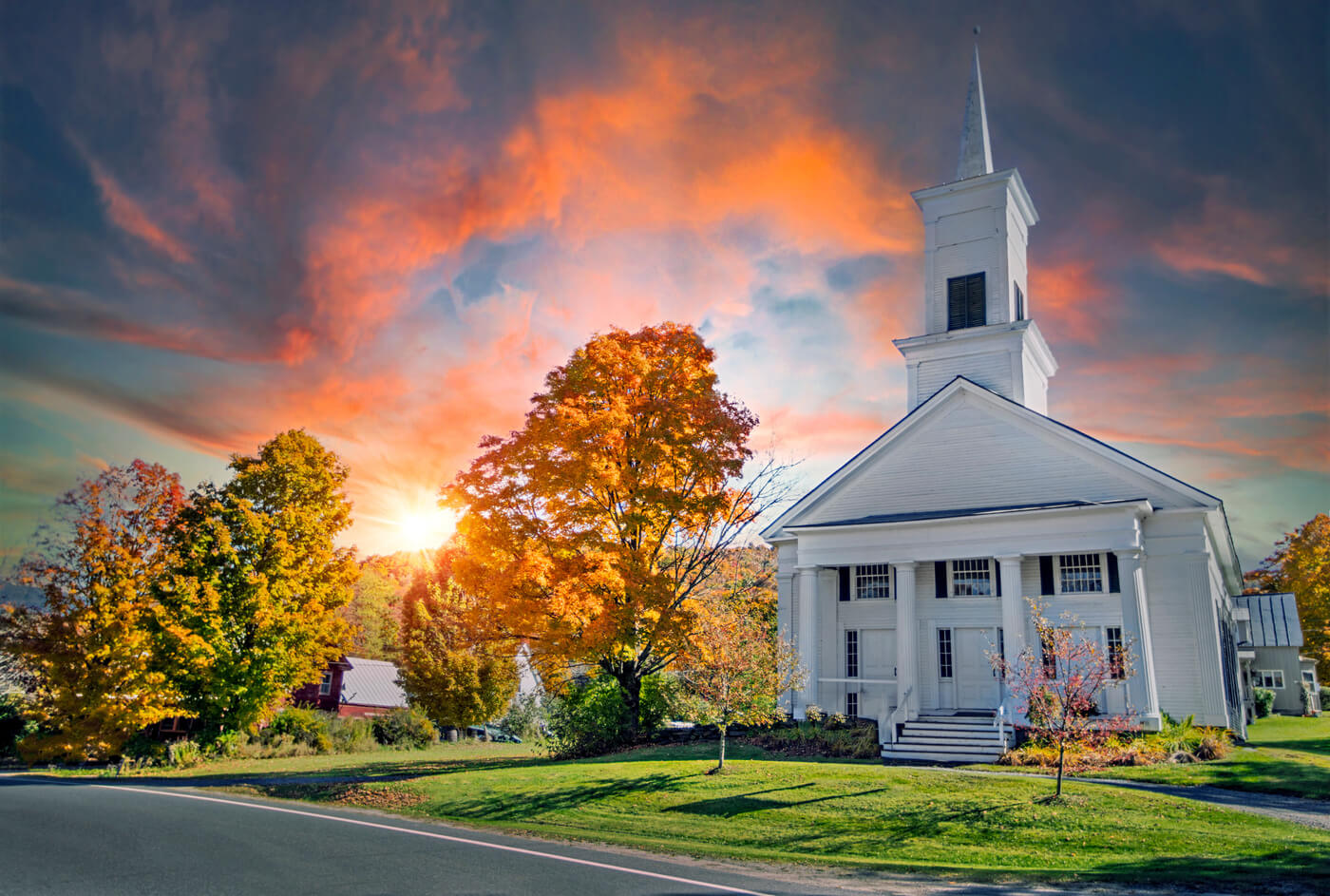
Churches, much like hotels and other hospitality facilities, are subjected to wear and tear like any other buildings. Many churches are much older and require professional maintenance systems and processes in order to keep the parishioners proud and the facilities operational.
Whether your church is brand new, or centuries-old, its development will have been relative to the surrounding area and community. Even in the U.S., there are old churches that date back to the 1700s, so your church may have maintenance requirements that another doesn’t.
With that in mind, be aware that each step mentioned here won’t necessarily be relevant to your situation and church, so your own church facility management may vary. This post will cover issues that will apply to most churches and the most commonly occurring issues.
Church Maintenance: 7 Steps
Keep in mind, there is more to maintaining a church than outward appearance –many vital operations depend on the hidden electrical and plumbing needs behind the scenes. Our church maintenance tips will cover all of that.
Let’s start from the top and work our way down.

Church Maintenance: The Roof
Maintaining your roof is essential for the health of the entire building, so it’s imperative that your roof remains watertight and weatherproof.
Each roof is different, and some historic buildings will have far more complicated roofs, but here is a list of things to check for:
- Damaged or lifted shingles or lead
- Slipped slates or tiles
- Missing or broken ridge tiles
- Debris in gulleys and valleys
- Corroded lead
- Dampness or moisture in roof timbers
- Signs of bats or infestation in roof spaces
Clearly, some of these will not apply to a modern building, but whatever the age and condition of your church, be sure to take proper care when doing inspections.
Unless your staff has professionally trained roof workers, this might be one of the jobs you want to subcontract out to a professional.
However, whether you hire a pro or rely on the efforts of volunteers you can streamline your efforts with a church maintenance checklist.
Church Maintenance: Eaves and Gutters
It’s easy to assume your eaves and gutters are doing their job—until they no longer do, and you have a potential catastrophe on your hands.
Gutters, like your church roof, protect your building from water damage. So it’s important that they are regularly maintained. Leaves and other debris can collect in your gutters and eventually clog them. Once that happens, water is no longer channeled away from your building, and this can result in significant damage. To the extent of ruining your foundation.
What should you do?
- Clean the eaves of your church facilities at least once a year, but preferably in May and November.
- Schedule regular inspections to ensure nothing is limiting the flow of water
As mentioned above, this is a potentially dangerous job. So if you plan to do it yourself as part of your regular church cleaning, be sure to consider all safety precautions and procedures.

Church Maintenance: Walls
Maintaining the walls of a newer building won’t be anywhere near as problematic as it will be if you have a historic church.
In an ancient or historic church, the walls tend to be a significant part of the building’s heritage. They can tell a story of your church facilities, showcasing local craftsmanship from the time the building was built that requires special care and attention.
In order to preserve that story, regularly check the walls for damage or wear. Another important thing to check for is any inappropriate or damaging building materials or techniques that may have been used at some time in the past. They could have an impact on the health and longevity of your building.
- On the inside of the walls, check for any signs of water penetration
- If you find problems, deal with them immediately, but be sure to make any repairs using materials and techniques that match the original work
- If you are repairing stonework, it’s preferable to use flush pointing instead of strap pointing, as it can be damaging.

Church Maintenance: Windows and Doors
If your church is a heritage building, chances are you may have some of the original wooden doors, window openings, and either stained or plain glass panes.
Keeping these treasures in your church facilities means taking care of them. It means keeping abreast of maintenance.
- Check window openings for weather damage and signs of wear whether they are stone or brick
- Check the metal embedded in the structure to hold the window isn’t or hasn’t expanded and caused damage
- Check windowpanes—especially colored panes—for any sign of condensation. If this is left unchecked it can cause significant deterioration. Lack of proper ventilation is often the root cause, so make sure to address that as well.
- Check that all doors and door hardware is in good working order.
- Old wooden doors need to be checked for any kind of infestation.
- Ensure that any doors that are used as a means of fire escape are blocked.
Church Maintenance: Utilities and Mechanics
Mechanical, electrical, plumbing. Is it all in good working order?
Do you have a church maintenance checklist that covers things like heating and cooling equipment, sinks and toilets, lighting and so forth?
Regularly scheduled checks should be carried out, looking for things like:
- Leaky pipes
- Dripping faucets
- Worn wires or cabling
The benefits of these regular checks are twofold:
- You could spare your church the expense of major repairs. Repairs that could have been minor if you had of caught them sooner.
- You may find areas where you can reduce consumption and therefore save on expenses.
As far as your HVAC equipment goes, you will need to have that professionally serviced on a regular basis and need to follow the manufacturer’s recommended preventative maintenance procedures.
Additionally, any carbon monoxide detectors and smoke alarms will need to be regularly tested and if battery operated, batteries need to be replaced. In line with that, you also need to have your fire extinguishers checked and serviced or replaced if necessary.
Using a tool like MaintainX helps remind your staff when these recurring work orders need to be completed and performed.

Church Maintenance: Church Grounds
Maintenance of your outdoor church facilities is necessary as well.
Check for any structural problems with your churchyard walls, memorials, and monuments. Pathways should also be checked. All of them should be kept clear of moss.
While you’re at it, check the following:
- Look for any drainage issues on your landscaping. Make sure rainfall doesn’t run toward your church
- Check trees for rot or disease
- Cut back any branches or shrubbery that are obstructing pathways
- Make sure nothing is stored against the church walls that could cause dampness
Parking lots also need to be checked and maintained. Deal with any cracks or potholes—or anything that could potentially cause harm to people or cars.

Church Maintenance: Miscellaneous
It’s wise to include furniture, organs, A/V equipment, and other components in your facilities to your church maintenance checklist. If you have wooden pews, for example, make sure the wood is checked regularly for rot and for rough edges. Your congregation doesn’t want to be stabbed with splinters during your services.
Does your church have a bell tower? If so, you should have and keep a record of its maintenance.
If you maintain the bells yourself instead of hiring someone to do it, here is a list of things to inspect:
- Visually inspect the structure itself, including the tower, supports, and bell.
- Make note of any signs of aging and or cracks
- Examine all bolts. Tighten any that are loose and replace any that are rusted.
- All pulley structures should be examined and replaced or adjusted if there is any sign of wear, stress, or anything that impedes rotation.
- Ropes should be checked for wear and tear. Any that are frayed or damaged need to be replaced.
- Examine the clapper joints. Lubricate and adjust as necessary.

Use MaintainX for Church Facility Management
Clearly, there is a lot involved in church facility management.
However, with the help of a solid yet simple CMMS, you can ease the burden. In the past, a CMMS might have been too heavy-duty for 99% of churches. With the simplicity of modern solutions, that is no longer the case. Whether you need to schedule and prepare work orders and checklists for someone on staff or third-party service people, using something like MaintainX is key to getting the job done efficiently.
FAQs

Caroline Eisner is a writer and editor with experience across the profit and nonprofit sectors, government, education, and financial organizations. She has held leadership positions in K16 institutions and has led large-scale digital projects, interactive websites, and a business writing consultancy.





